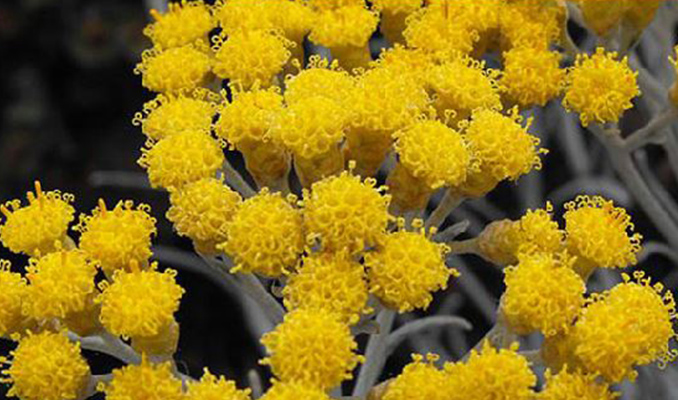Do Other Plant Species Contain Cannabinoids?
Published :
Aug 9, 2018
Categories :
Strain information

As our knowledge of cannabis continues to grow, questioning the potential of other plant species has become more prevalent. Could there be other plants that offer similar health-boosting effects, courtesy of cannabinoids?
Cannabis continues to prove through new research and broader acceptance that its uses are far-reaching and highly beneficial. Pain management, reducing inflammation, and alleviating stress and anxiety are but some of the attributes users have come to love it for. What if other plants had similar effects? Or could be used to enhance the characteristics experienced when smoking weed?
There are, in fact, other plants that contain similar chemical compounds to cannabinoids, capable of interacting with our body’s own endocannabinoid system. However, if all this talk of cannabinoids and chemical compounds has you confused, allow us to break down the differences between cannabis, cannabinoids, and cannabimimetics.
WHAT ARE CANNABINOIDS AND HOW DO THEY WORK?
Cannabinoids are lipid-based compounds that form the core genetic makeup of marijuana plants. You may have already heard of cannabinoids like CBD, THC, and CBN. With another 100 different cannabinoids present in cannabis, there is still a vast amount to learn about how each one interacts with our bodies.
Undoubtedly, you will have heard of THC and CBD. THC is the key component in cannabis that gets users high and is responsible for its psychoactive side effects. CBD, on the other hand, is accountable for a wealth of health-boosting benefits, making strains rich in CBD highly popular among medicinal cannabis users. CBD does not have any of the psychoactive side effects usually associated with cannabis. Each cannabinoid sustains a different impact via how and with which CB1 or CB2 receptor it interacts. Finally, cannabinoids are primarily split into two categories.
Endocannabinoids or “endogenous cannabinoids” are produced naturally within our bodies. Anandamide and 2-AG are both endocannabinoids, with anandamide released when feelings of pleasure and reward stimulate us.
Phytocannabinoids are the cannabinoids contained within cannabis and provide the myriad of effects many cannabis lovers have come to know and love. Both, however, rely on our endocannabinoid system to be effective.
WHAT IS THE ENDOCANNABINOID SYSTEM?
Regardless of where they originate, cannabinoids trigger a reaction based on stimulating CB1 and CB2 receptors in our endocannabinoid system (ECS). This regulatory system is present in all mammals; cats, dogs, even the household hamster! It is responsible for maintaining a vast spectrum of physiological functions including homeostasis and the release of several chemical compounds.
When cannabis is smoked or ingested, THC interacts with CB1 receptors to induce the feeling of being high. As studies continue, researchers are finding new and complex ways in which the endocannabinoid system can be stimulated. Recently, it was discovered that other plants besides cannabis contain similar chemical compounds that interact with our endocannabinoid system. These “cannabimimetics” are more prevalent than you might think.
IF CANNABIS CONTAINS CANNABINOIDS, WHAT ARE CANNABIMIMETICS?
Not as sophisticated as they sound, cannabimimetics mimic the biological activity of cannabinoids without sharing the same genetic structure. Essentially, they can still promote or contribute to a number of reactions from our ECS, but they won't get you high like THC will. The ECS is such a vast network of receptors that, as our understanding grows, so too do the possibilities of more direct and indirect stimulation via dozens of different compounds.
PLANTS CONTAINING CANNABIMIMETICS
This list is by no means exhaustive, but covers what we know about several plants and their ability to produce cannabimimetics. You may have already used some of these plants as therapeutic remedies before, but never fully understood why they had the impact they did.
LIVERWORT
Despite sounding like something you put in a witch’s cauldron, liverwort has some unusual properties. A specific species of liverwort named Radula marginata is native to New Zealand and contains a compound known as perrottetinenic acid. The unique feature of this liverwort compound is its similarity to THC. Unfortunately, little is known about the specific capabilities of perrottetinenic acid, but it is believed to interact with CB1 receptors.
Attempts have been made to smoke liverwort; however, results have been mixed. So far, the plant has only been capable of providing a mild head buzz.
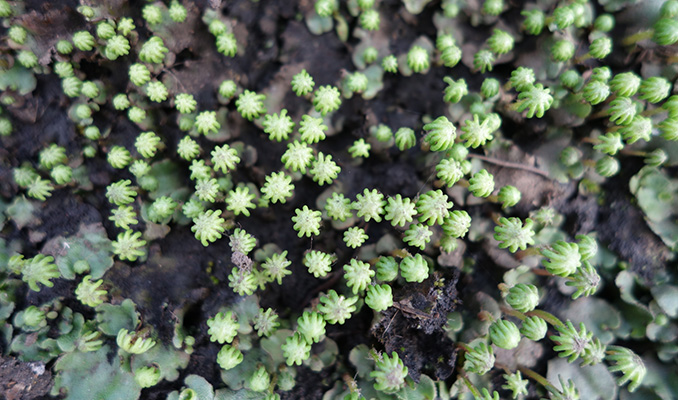
ECHINACEA
Arguably one of the most popular and well-known plants on our list. Echinacea has been linked to assisting with a multitude of symptoms. Fighting the common cold, relieving stress, anxiety, migraines, and arthritis, the power behind Echinacea is a result of its cannabimimetics interacting with CB2 receptors. CB2 receptors are primarily responsible for regulating our immune system. In this case, Echinacea contains the compound N-alkylamides (NAAs). N-alkylamides shares a striking resemblance to THC and anandamide in the way in which it promotes anti-inflammatory effects.
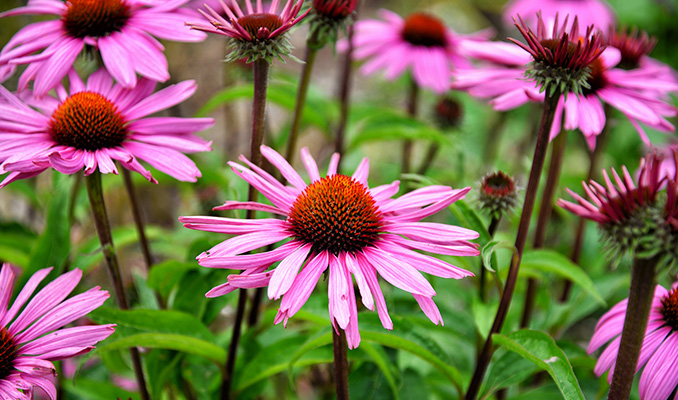
ELECTRIC DAISY
Commonly referred to as the toothache plant, you guessed it, electric daisy has been used in native Amazonian remedies to help with toothache and digestive problems. It turns out the Amazonians knew what they were doing; a Cambridge University researcher says the plant could be used in modern dentistry to support pain reduction and reduce inflammation. Electric daisy has a similar compound to Echinacea, in that N-Isobutylamides also interacts with CB2 receptors and our body’s immune system.
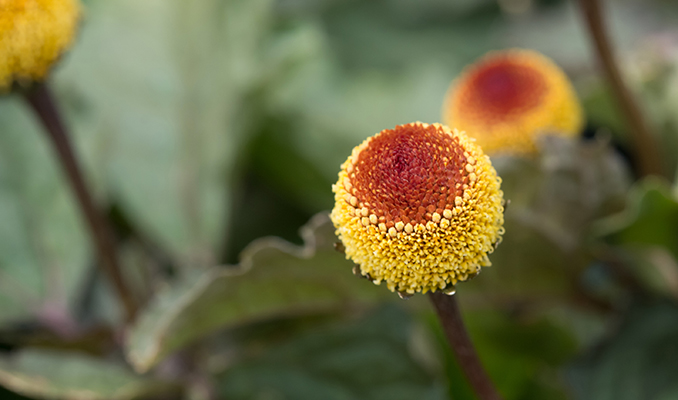
BLACK PEPPER
Love it or hate it, the spicy, peppery aroma that complements so many dishes shares some similar compounds with cannabis! To support cannabinoids, terpenes provide the distinct aroma and flavours that you find in every strain. Within black pepper, the terpenes are actually more like cannabinoids. Both cannabis and pepper contain significant amounts of beta-caryophyllene, another compound that binds to CB2 receptors. As we already know, this leads to many boosts to our immune system and our body’s ability to reduce inflammation.
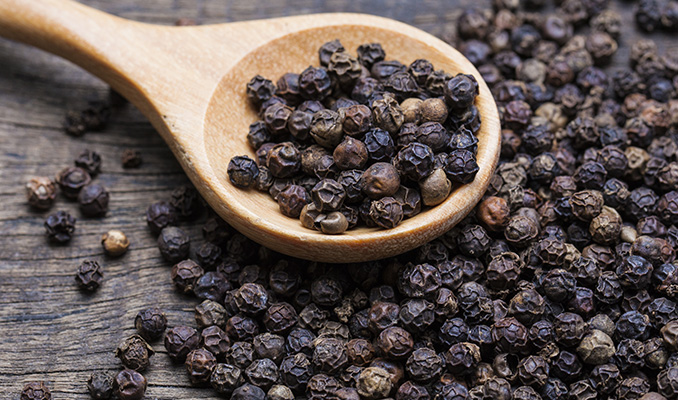
COCOA TREE
The news you’ve all been waiting for; yes, chocolate is good for you! However, the link between chocolate and the feel-good factor it provides is slightly more complicated than merely triggering a CB receptor. Instead, chocolate deactivates the enzyme FAAH. FAAH is responsible for breaking down anandamide, an endocannabinoid we referred to earlier. During specific activities (eating is one of them), anandamide is released to give us feelings of pleasure and reward.
By blocking FAAH, less anandamide is broken down, and those feelings of pleasure are more intense and longer-lasting. The compounds blocking FAAH—N-linoleoyl and N-oleoylethanolamide—are most concentrated in dark chocolate.
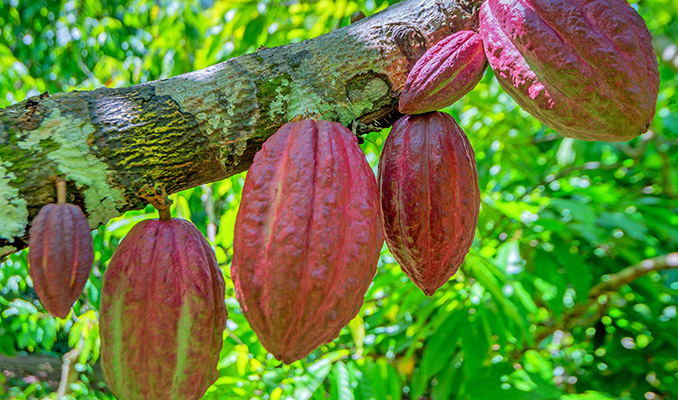
HELICHRYSUM UMBRACULIGERUM
Unfortunately, little is known about the specific nature of Helichrysum umbraculigerum, mainly because in its native environment of South Africa, strict regulations prevent it from being exported for study. However, what we do know is it's believed to be a member of the daisy family with high concentrations of the cannabinoid CBG. Cannabigerol is credited with having antidepressant and mood-stabilising properties; but without conclusive research, the real power of this plant is yet to be realised.
THE FUTURE OF CANNABINOIDS
Something all of these plants have in common is untold viability for therapeutic remedy. The discoveries within cannabis and the healing power it presents are exciting enough. To know that several other species also possess compounds similar to cannabinoids could have far-reaching implications for how we treat ailments in the future.


